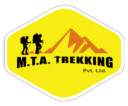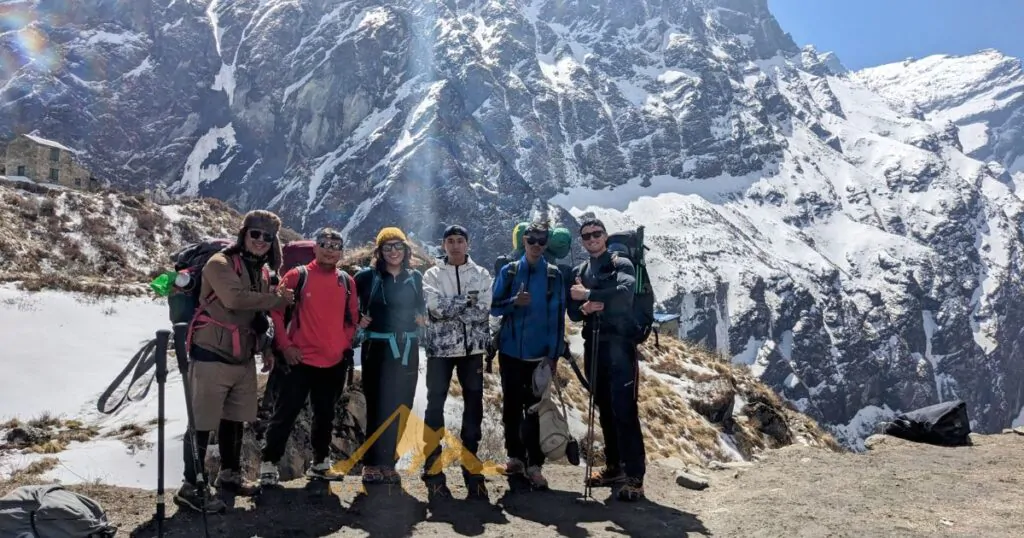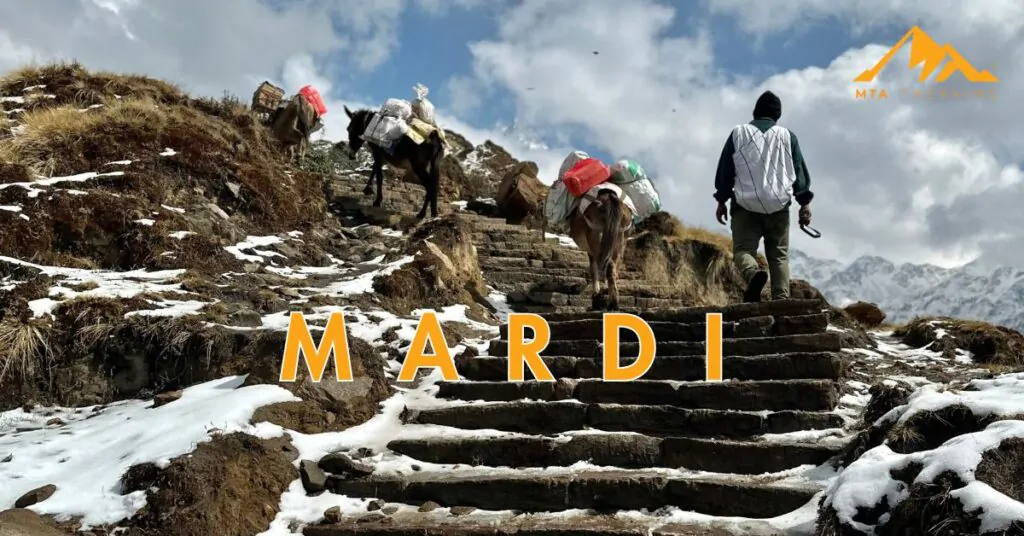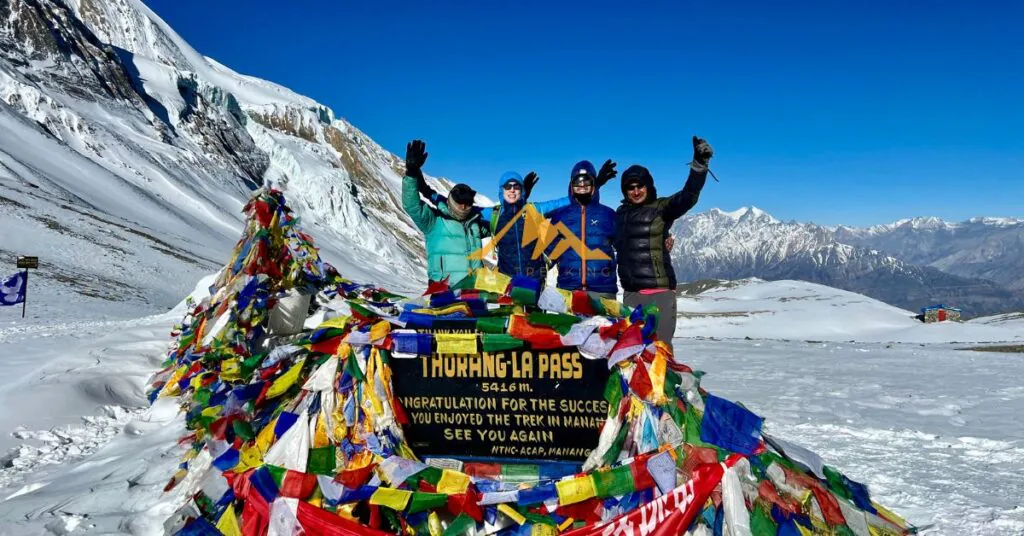
The Annapurna Circuit is one of the most iconic trekking routes in the world, lied within the beautiful Annapurna mountain range of central Nepal. Known for its diverse landscapes, cultural richness, and incredible views, this trek offers a once-in-a-lifetime adventure for trekkers of all levels. The trail spans 160 to 230 kilometers (100 to 145 miles), with variations depending on where the journey begins and ends, as well as the extent to which motor-powered transport is used.
One of the highlights of the Annapurna Circuit is the Thorung La Pass, standing at an altitude of 5,400 meters (17,716 feet). This point marks the highest part of the trek, offering panoramic views of snowcapped peaks and touching the edges of the legendary Tibetan Plateau. Along the way, trekkers encounter a blend of green forests, dry landscapes, traditional villages, and ancient monasteries.
Whether you are seeking natural beauty, cultural exploration, or a physical challenge, the Annapurna Circuit promises an unforgettable journey. MTA Trekking is here to guide you through everything you need to know, ensuring your Annapurna Circuit Trekking experience is as seamless and enriching as possible.
Annapurna Circuit at a Glance
The Annapurna Circuit is among the most renowned trekking routes in the world, attracting adventurers with its stunning landscapes and cultural richness. Spanning approximately 128 miles (206 kilometers), this circuit offers a breathtaking journey through the heart of Nepal’s diverse terrain and traditions.
The trek begins in the lush lowlands, where terraced fields and subtropical forests dominate the scenery. As you go up, the landscape slowly changes, leading you to the towering peaks of the Himalayas. At its summit, the circuit takes you across the Thorung La Pass at an altitude of 5,400 meters (17,716 feet). After conquering the pass, you’ll descend into the dry, desert-like terrain of the Kali Gandaki Valley, which is known for being one of the deepest gorges in the world.
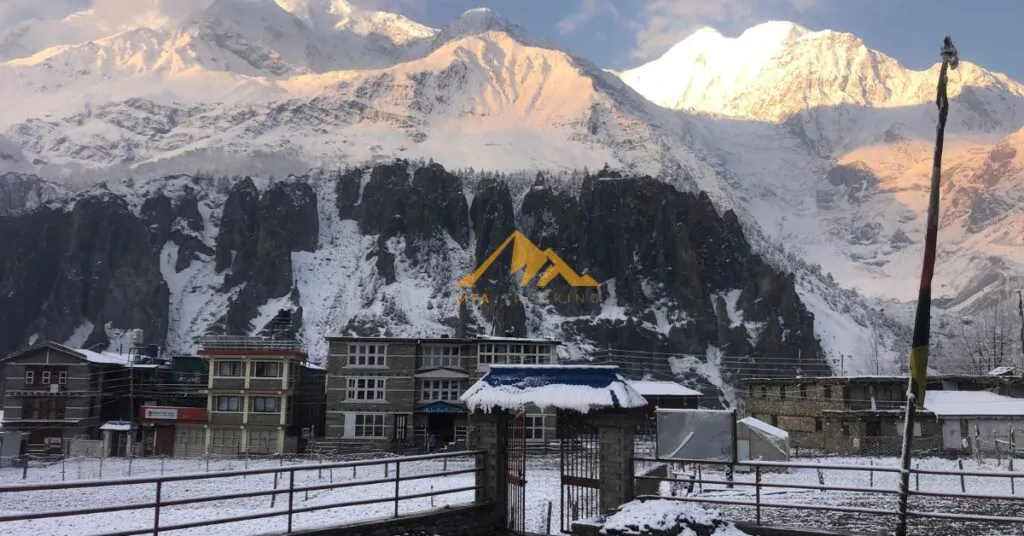
Throughout the Annapurna Circuit, you’ll encounter an order of colorful villages, each with its own separate beauty. The locals, flexible and resourceful, make a living amidst some of the world’s hardest environments. As you trek, you’ll also witness the region’s rich cultural heritage. That highlights ancient monasteries, prayer flags waving in the wind, and sacred sites like Tilicho Lake, the highest lake in the world.
The Annapurna Circuit Trekking adventure is challenging and rewarding in equal measure. Trekkers typically spend 14 to 18 days on the trail, covering long distances daily. A good level of fitness and preparation is essential to fully enjoy the experience. The altitude, varying weather conditions, and rugged terrain can be demanding, but the breathtaking views and cultural immersion make every step worthwhile.
You will be captivated by the snowcapped peaks, interested by the traditions of the Gurung and Thakali people, or simply seeking a connection with nature. The Annapurna Circuit promises an unforgettable journey. It is a perfect blend of adventure, culture, and natural beauty that leaves trekkers in awe.
MTA Trekking is here to ensure that your Annapurna Trek Nepal is safe, enjoyable, and memorable. With expert guidance and personalized support, we’ll help you make the most of this incredible trek.
Best Time to Visit Annapurna Circuit
Choosing the right time to embark on your Annapurna Circuit adventure is crucial to making the most of this iconic trek. While the Annapurna Circuit Trekking route is open year-round, the ideal seasons to visit are spring (March to May) and autumn (September to November).
Spring (March to May)
Spring is one of the best times to visit the Annapurna Circuit. During these months, the weather is mild, with clear skies and comfortable temperatures. Daytime temperatures at lower elevations are pleasant, while higher altitudes remain chilly but adaptable. The trail comes alive with vibrant rhododendron blooms and other wildflowers, creating a colorful backdrop to your trek. The stunning views of the Annapurna and Dhaulagiri ranges are at their best, making spring a favorite for nature lovers and photographers.
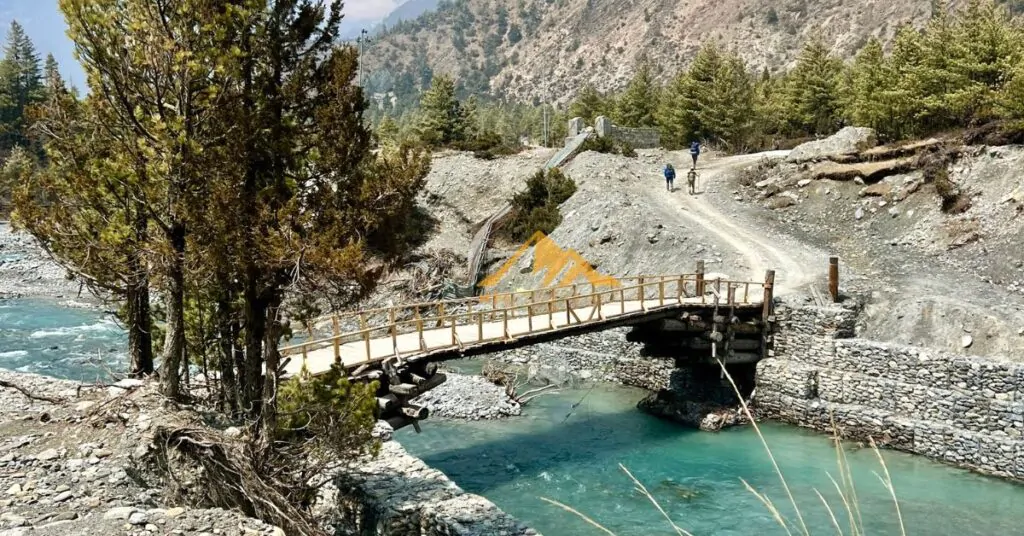
Autumn (September to November)
Autumn is another peak season for the Annapurna Trek Nepal. Following the monsoon rains, the skies clear up, offering crisp views of the snow-capped peaks. The temperatures are moderate, and the trail conditions are excellent, making trekking a delightful experience. This season is also culturally rich, as it coincides with major festivals like Dashain and Tihar, providing an opportunity to witness local traditions.
Winter (December to February)
While winter trekking is possible, it’s more challenging. The higher altitudes, including the Thorung La Pass, often experience heavy snowfall, which can make some sections of the trail inaccessible. Temperatures drop significantly, especially at night. However, for those seeking solitude and a quieter trail, winter offers a peaceful trekking experience with unparalleled views of the snow-covered Himalayas.
Monsoon (June to August)
The monsoon season is the least popular time for the Annapurna Circuit due to heavy rainfall. The trails can become slippery, and there’s a risk of landslides in certain areas. However, for adventurous trekkers, the thick greenery, fewer crowds, and dramatic cloud formations can be appealing. Rain shadows in areas like Manang and Mustang still offer trekking opportunities during this season.
To fully enjoy your Annapurna Circuit Trek, timing your visit during spring or autumn is recommended. MTA Trekking will help you plan your trek in any season, ensuring a safe and memorable experience tailored to your preferences.
Annapurna Circuit Trek Difficulty
The Annapurna Circuit is often rated as a moderate trek, but don’t let that label fool you—it’s a long and demanding journey that requires preparation and determination. While the route does not involve technical climbing, its length, altitude, and varied terrain make it a challenge for trekkers of all levels.
Length and Duration
The trek spans approximately 160 to 230 kilometers (100 to 145 miles), depending on the chosen route and use of motor transportation in some sections. Most trekkers complete the Annapurna Circuit in 15 to 20 days, covering an average of 10 to 20 kilometers per day. For those short on time, it’s possible to finish in as little as 10 days by skipping certain sections via transport, though this reduces acclimatization time.
Altitude Challenges
The biggest hurdle on the Annapurna Circuit Trekking adventure is altitude. The trek’s highest point, the Thorung La Pass, stands at 5,416 meters (17,769 feet). At such elevations, the risk of altitude sickness is significant. Proper acclimatization is essential to minimize this risk. Taking rest days at key points like Manang and ascending gradually are highly recommended to adjust to the thinning air.
Fitness Requirements
The Annapurna Circuit is suitable for individuals with a moderate level of fitness. While no prior trekking experience is required, you should be prepared for long days of walking, often on uneven or steep trails. Cardiovascular stamina, leg strength, and a positive mindset are key to enjoying the trek. Regular exercise and practice hikes before your trip can significantly improve your experience. You can check MTA Trekking’s website for shorter hikes.
Weather and Trail Conditions
The trail presents varied conditions, from rocky paths to suspension bridges and snow-covered passes. Weather can further add to the challenge, especially in winter and monsoon seasons. Having proper gear, such as sturdy hiking boots, layered clothing, and trekking poles, is essential for navigating these conditions safely.
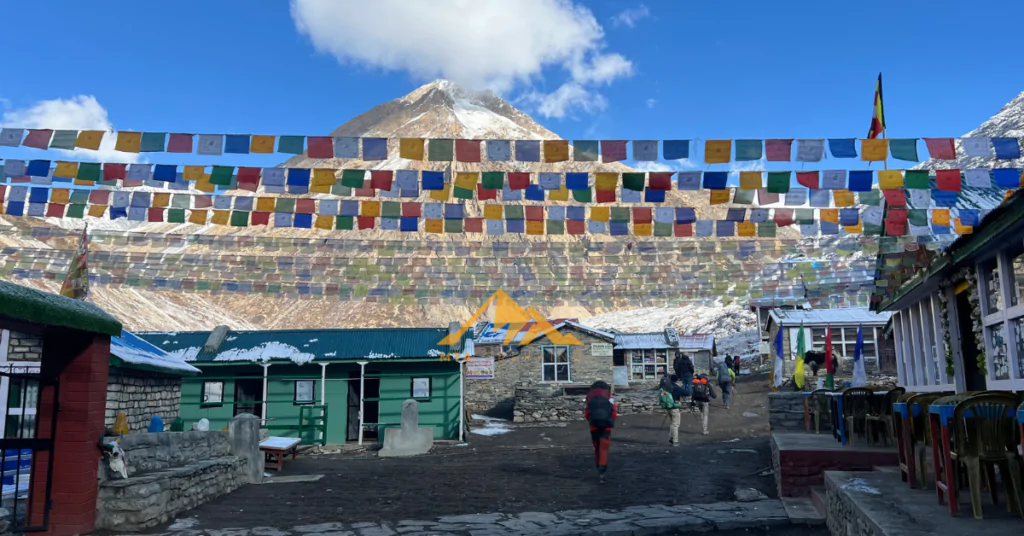
While the Annapurna Circuit Trek is challenging, it is achievable for most people with determination, proper preparation, and a willingness to adapt. The rewards—stunning mountain views, cultural immersion, and a sense of accomplishment—are well worth the effort.
At MTA Trekking, we ensure that you are well-prepared for the trek, providing expert guidance and support to make your Annapurna Trek Nepal a safe and memorable experience.
Do I Need a Guide for Annapurna Circuit Trek?
The Annapurna Circuit Trek is one of the most popular trekking routes in Nepal, and many trekkers wonder if hiring a guide or porter is necessary. While the trail is well-marked and suitable for independent trekking, having a guide or porter can significantly enhance your experience.
Trekking Independently
For seasoned adventurers, the Annapurna Circuit is one of the best treks in Nepal to do independently. The trail is well-defined, with clear signage and established teahouses along the route. Teahouses provide meals, accommodation, and an opportunity to connect with fellow trekkers, making it relatively easy to navigate without a guide.
However, trekking alone requires thorough preparation. You’ll need a detailed understanding of the route, including key milestones like Thorung La Pass and acclimatization points like Manang. Carrying your own gear is essential, so you should pack wisely and ensure you have enough food and water to sustain you between teahouses. Additionally, being aware of altitude sickness symptoms and knowing how to respond is crucial for safety.
Benefits of Hiring a Guide or Porter
Hiring a guide or porter can make the Annapurna Circuit Trekking experience more comfortable and enriching.
- Guides: Local guides are knowledgeable about the terrain, culture, and weather conditions. They can help you navigate tricky sections, share insights about the region’s history and traditions, and provide support in emergencies.
- Porters: Porters carry your heavy gear, allowing you to focus on enjoying the trek without the physical strain of a heavy backpack.
With a guide or porter, you’ll also contribute directly to the local economy, supporting the livelihoods of individuals in the region.
Where to Hire Guides or Porters
If you choose to hire assistance, you can arrange for a guide or porter in Kathmandu or Pokhara before heading to the trail. Alternatively, the town of Besisahar, the starting point of the trek, offers opportunities to find experienced guides or porters.
While the Annapurna Circuit can be done independently, hiring a guide or porter ensures a safer and more enjoyable experience. MTA Trekking offers experienced guides and porters who will make your Annapurna Trek Nepal worry-free, allowing you to focus on the beauty and adventure of the trail.
Altitude Sickness
Altitude sickness is a significant concern when trekking in the Himalayas, especially on the Annapurna Circuit. The trek reaches a maximum altitude of 5,416 meters (17,769 feet) at Thorong La Pass. Rapid elevation gain can impact anyone, regardless of age, fitness level, or previous trekking experience.
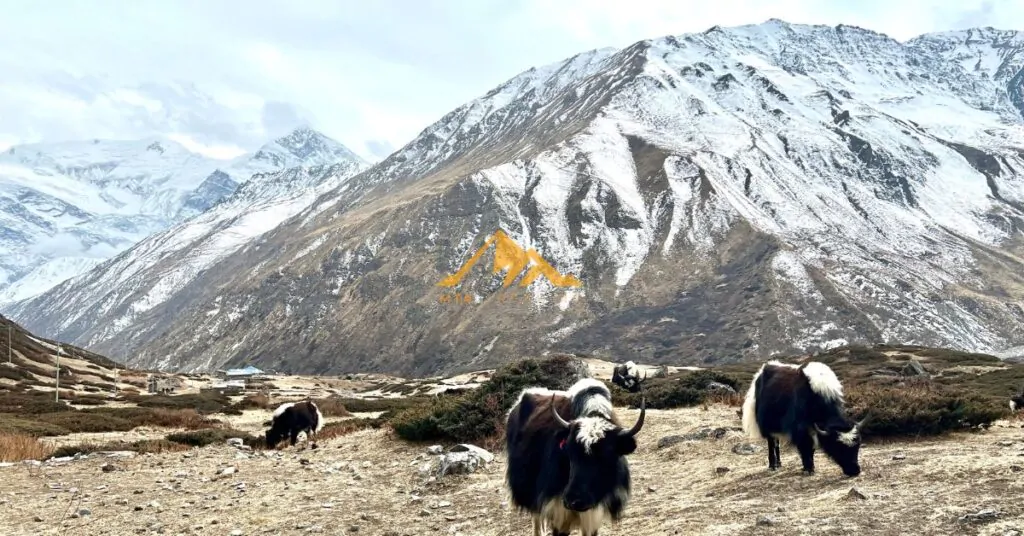
Understanding Altitude Sickness
Altitude sickness occurs when your body struggles to adapt to the reduced oxygen levels at higher elevations. The key to avoiding altitude sickness during your Annapurna Circuit Trek is proper acclimatization, which means ascending gradually and allowing your body time to adjust. Most trekking itineraries include rest days in places like Manang, where trekkers can adapt to higher altitudes before proceeding further.
Types of Altitude Sickness
There are three main types of altitude sickness:
- Acute Mountain Sickness (AMS)
- The most common form of altitude sickness.
- Symptoms: Headache, nausea, vomiting, loss of appetite, dizziness, and fatigue.
- AMS is usually mild, but it can worsen if ignored.
- High Altitude Pulmonary Edema (HAPE)
- Caused by fluid accumulation in the lungs.
- Symptoms: Difficulty breathing, persistent coughing (sometimes with frothy or bloody sputum), weakness, and chest tightness.
- HAPE is life-threatening and requires immediate descent.
- High Altitude Cerebral Edema (HACE)
- Caused by fluid accumulation in the brain.
- Symptoms: Severe headache, confusion, lethargy, disorientation, and ataxia (loss of coordination).
- HACE is a medical emergency requiring immediate descent and treatment.
Prevention Tips
- Acclimatize Slowly: Avoid ascending more than 300-500 meters (984-1,640 feet) per day above 3,000 meters.
- Stay Hydrated: Drink plenty of water to help your body adjust to the altitude.
- Avoid Alcohol: Alcohol and sleeping pills can exacerbate altitude sickness symptoms.
- Monitor Symptoms: Be vigilant for signs of AMS, HAPE, or HACE.
- Carry Medication: Consider taking Diamox (acetazolamide) to help prevent or reduce symptoms, but consult a doctor before use.
What to Do in Case of Symptoms
If you or anyone in your group experiences symptoms of altitude sickness, the best course of action is to descend immediately. In severe cases, seek medical attention without delay.
At MTA Trekking, our experienced guides prioritize your safety and will help you recognize and manage altitude sickness effectively, ensuring a safer and more enjoyable Annapurna Trek Nepal.
Annapurna Circuit Trek Cost
The cost of the Annapurna Circuit Trek varies depending on factors like the season, trek duration, and your chosen trekking style—whether you trek independently or with the assistance of a guide and porter. Here’s a breakdown of the main expenses you’ll encounter:
1. Trekking Permits
To trek the Annapurna Circuit, you’ll need two essential permits:
- Annapurna Conservation Area Permit (ACAP): $30 USD.
- Trekkers’ Information Management System (TIMS) card: $20 USD.
The total cost for permits is around $50 to $70 USD, depending on whether you hire a guide or trek independently.
2. Guides and Porters
- Guide: Hiring a professional guide costs around $25 to $30 USD per day. Guides enhance your trek by providing navigation, safety, and insights into the local culture and environment.
- Porter: Porters charge approximately $20 to $25 USD per day, carrying your gear to lighten your load. A porter-guide combination (one person handling both roles) is often a budget-friendly option.
3. Transportation
Transportation to and from the Annapurna Circuit is another significant expense.
- Kathmandu to Besisahar (trek starting point): Around $10 to $15 USD by local bus or $150 to $200 USD for a private jeep.
- Return transportation from Jomsom or Pokhara to Kathmandu: Around $20 to $200 USD, depending on your mode of travel (bus, jeep, or flight).
The total transportation cost is approximately $200 USD, depending on your preferences.
4. Accommodation and Food
Teahouses along the Annapurna Circuit provide basic accommodation and meals.
- Accommodation: $5 to $10 USD per night.
- Meals: $5 to $8 USD per meal.
On average, you’ll spend around $25 to $30 USD per day on food and lodging.
Estimated Total Cost
For a typical 15- to 20-day trek, the total cost of the Annapurna Circuit Trek is approximately $1,000 to $1,500 USD, depending on your trekking style, season, and preferences.
The Annapurna Circuit offers a range of options to fit different budgets, from independent trekking to guided tours. For the worry-free trek, contact MTA Trekking. It provides tailored packages, ensuring you get the best experience while staying within your budget for this iconic Annapurna Trek Nepal.
Food and Accommodation on Annapurna Circuit
During the Annapurna Circuit Trekking adventure, trekkers rely on tea houses for food and accommodation. These small, family-run lodges are a cornerstone of the trekking experience, offering a glimpse into local culture while providing essential services.
Accommodation in Tea Houses
Tea house accommodations are simple and functional. Most rooms are twin-sharing, furnished with two single beds, a pillow, and a blanket. While the setup is basic, it provides a warm and cozy environment after a long day on the trail.
- Room Features: Walls are often thin, so noise can travel, making earplugs a handy item to pack. Heating is typically limited to the common dining area, so carrying a quality sleeping bag for colder nights is essential.
- Bathrooms: Most tea houses have shared bathrooms, with squat or Western-style toilets depending on the location. Hot showers are available in some places but usually come with an additional fee, ranging from $2 to $5 USD.
Food Options
The tea houses offer a surprisingly diverse menu despite their remote locations. Meals are freshly prepared and carb-heavy, designed to fuel trekkers for the physically demanding trek.
- Staple Dishes:
- Dal Bhat: A traditional Nepali dish of rice, lentil soup, and vegetables, often served with unlimited refills.
- Momo: Steamed or fried dumplings filled with vegetables or meat.
- Noodles and Pasta: Simple yet filling options, often served with vegetables or egg.
- Rice and Curry: A mildly spiced dish with a choice of meat or vegetables.
- Western Options: Items like sandwiches, pancakes, and pizza are available in many tea houses closer to lower elevations.
Drinks and Water
Tea houses serve a variety of drinks, including tea, coffee, hot chocolate, and even local alcoholic beverages like raksi. While bottled water is available for purchase, it’s more eco-friendly and cost-effective to use water purification tablets or a filtration system to treat tap water, which most tea houses can provide.
Cultural Experience
Staying in tea houses is more than just practical; it’s an opportunity to connect with the local culture. You’ll interact with the families running these lodges and other trekkers from around the world, making it a unique part of your Annapurna Trek Nepal journey.
Annapurna Circuit Packing List
Packing the right gear is essential for a safe and enjoyable Annapurna Circuit Trek. As the trail takes you through diverse climates and altitudes, proper preparation ensures you’re comfortable and ready for any conditions. Here’s a comprehensive packing list for your Annapurna Trek Nepal adventure:
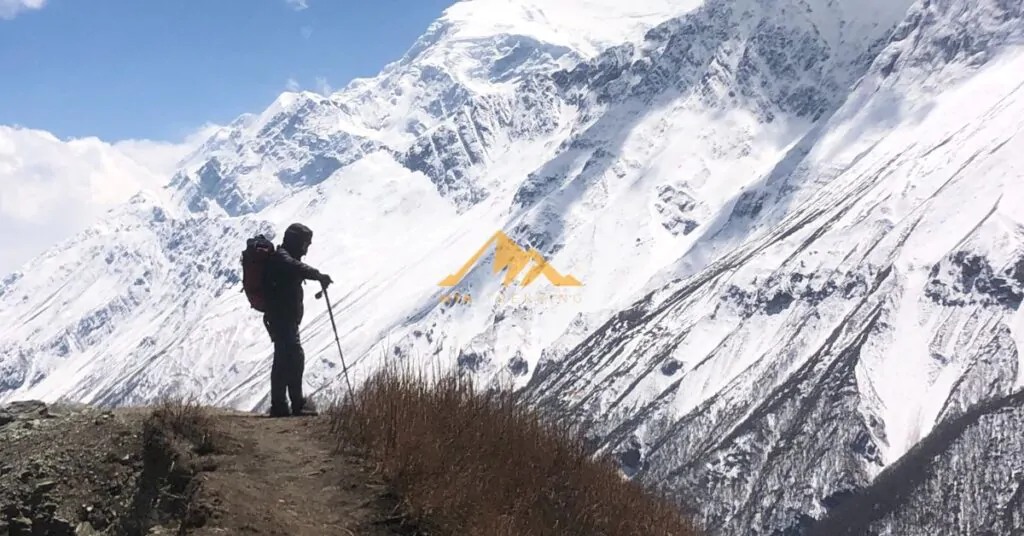
Clothing Essentials
- Hiking Boots: Invest in sturdy, waterproof hiking boots that are broken in before the trek. Avoid new boots to prevent blisters.
- Base Layers: Pack moisture-wicking base layers to keep you warm and dry in colder temperatures.
- Hiking Pants: Quick-drying and moisture-wicking hiking pants are ideal for trekking. Bring at least two pairs.
- Insulated Jacket: A warm, insulated jacket is essential for cold mornings, evenings, and higher altitudes.
- Fleece Jacket: A lightweight fleece jacket is perfect for layering and provides extra warmth.
- Rain Jacket: A waterproof and windproof rain jacket is crucial for unexpected weather changes.
- Gloves: Insulated gloves will keep your hands warm in freezing conditions.
- Hat: A warm hat or beanie to protect your head from the cold.
- Socks: Bring moisture-wicking and thermal socks to keep your feet dry and warm.
Accessories and Sun Protection
- Sunglasses: Protect your eyes from the intense sun at higher altitudes. Look for UV-protected lenses.
- Sunscreen: High SPF sunscreen is essential to shield your skin from the strong mountain sun.
- Lip Balm: A good lip balm with SPF protects your lips from cracking and sunburn.
Sleeping Essentials
- Sleeping Bag: A sleeping bag rated for cold weather is necessary for chilly nights in tea houses.
Health and Safety Gear
- First Aid Kit: A basic first aid kit should include bandages, antiseptics, pain relievers, and altitude sickness medication.
- Water Purification: Carry purification tablets or a filtration system for safe drinking water.
Backpack and Other Essentials
- Backpack: A comfortable trekking backpack with proper support and space for your essentials.
- Headlamp: Useful for navigating in the dark or during early morning starts.
Optional Items
- Trekking Poles: Provide stability on uneven terrain and reduce strain on your knees.
- Snacks: High-energy snacks like granola bars or trail mix for a quick boost.
Proper packing ensures you’re ready to enjoy the stunning Annapurna Circuit Trekking experience while staying safe and comfortable at every step.
Annapurna Circuit Trek Itinerary
The Annapurna Circuit is a journey of a lifetime, taking you through diverse terrains, from lush green valleys to arid high-altitude landscapes. The trek can be tailored to suit your preferences, typically ranging from 10 to 21 days, depending on your pace and schedule.
Rather than attempting to cover every detail here, we’ve crafted a comprehensive, day-by-day itinerary on our website to guide you through every step of this iconic trek. Our itinerary provides insights into:
- Daily trekking distances and elevation changes.
- Key highlights of each day, including cultural sites and scenic views.
- Recommended acclimatization stops for a safe and enjoyable trek.
- Tips to customize your route based on your time and preferences.
Whether you’re looking for a shorter version of the trek or a detailed 15+ day adventure, we’ve got you covered.
Why Check MTA Trekking’s Itinerary?
At MTA Trekking, we specialize in crafting personalized trekking experiences that balance adventure, safety, and cultural immersion. Our detailed itinerary ensures you don’t miss out on the best this trek has to offer while staying flexible to your needs.
👉 Click here to view MTA Trekking’s Annapurna Circuit Trek Itinerary
Explore the full itinerary and let us help you plan a seamless trekking experience through the majestic Annapurna Circuit.
Conclusion
The Annapurna Circuit is an adventure like no other—a journey through breathtaking landscapes, vibrant local cultures, and unforgettable trekking challenges. Whether you’re an avid trekker or someone seeking to experience the beauty of the Himalayas, this trek offers a unique and rewarding experience that will stay with you forever.
At MTA Trekking, we are committed to making your Annapurna Circuit Trek not only memorable but also seamless. We hope this guide has been helpful in giving you a clear picture of what to expect and how to prepare for your trek.
If you have any questions, need assistance with planning, or want to learn more about our trekking packages, we’d love to hear from you! Feel free to contact us or visit our website for more details.
Let MTA Trekking be your guide to one of the most incredible adventures of your life!
Frequently Asked Questions (FAQs)
1. Is the Annapurna Circuit suitable for beginners?
While the Annapurna Circuit is a moderate to challenging trek, it is manageable for beginners with good physical fitness and proper preparation. Taking rest days for acclimatization and trekking at a steady pace can significantly improve your experience.
2. What is the weather like on the Annapurna Circuit?
The weather varies based on the season and altitude. Spring (March-May) and autumn (September-November) offer the best trekking conditions with clear skies and moderate temperatures. Winter can be cold with snow at higher elevations, while monsoon brings rain and potential landslides in lower regions.
3. Are there ATM facilities on the trek?
ATM facilities are rare along the Annapurna Circuit. It’s advisable to carry enough cash (in Nepali Rupees) for the entire trek, including accommodation, food, and emergencies, as teahouses and shops do not accept credit cards.
